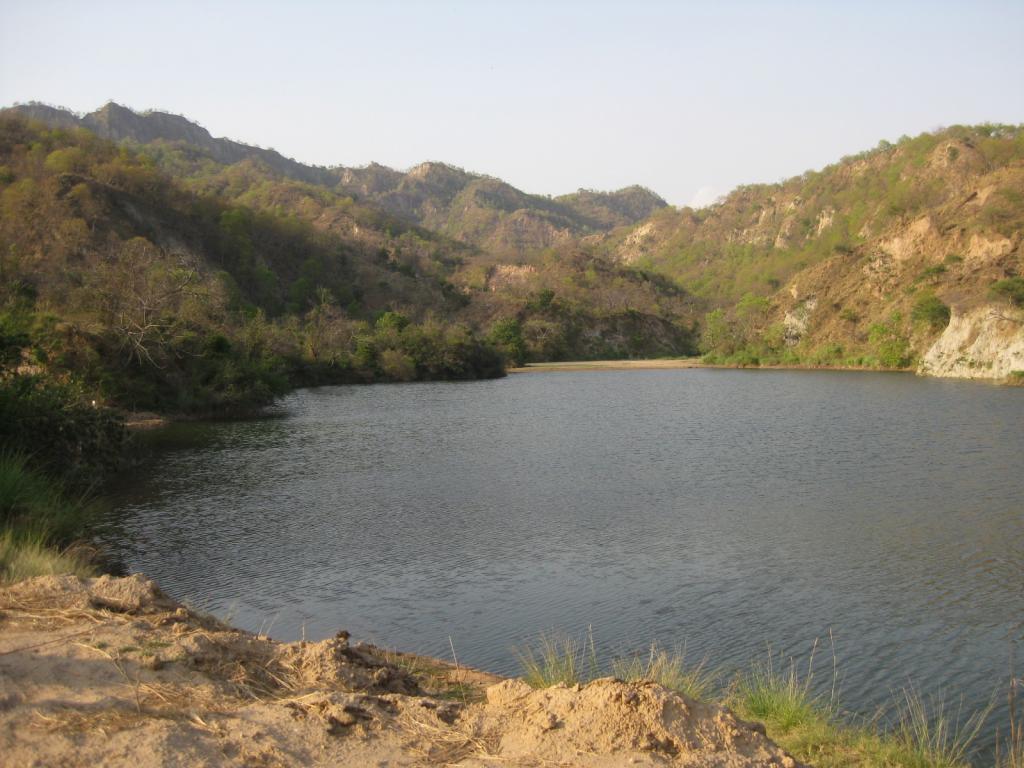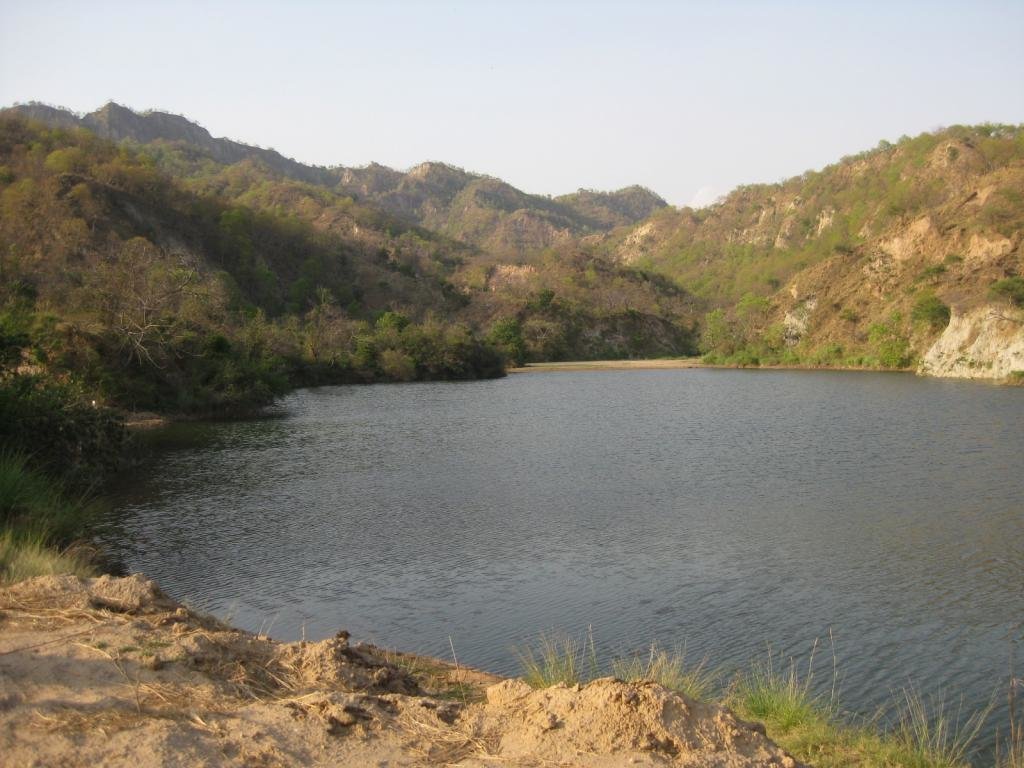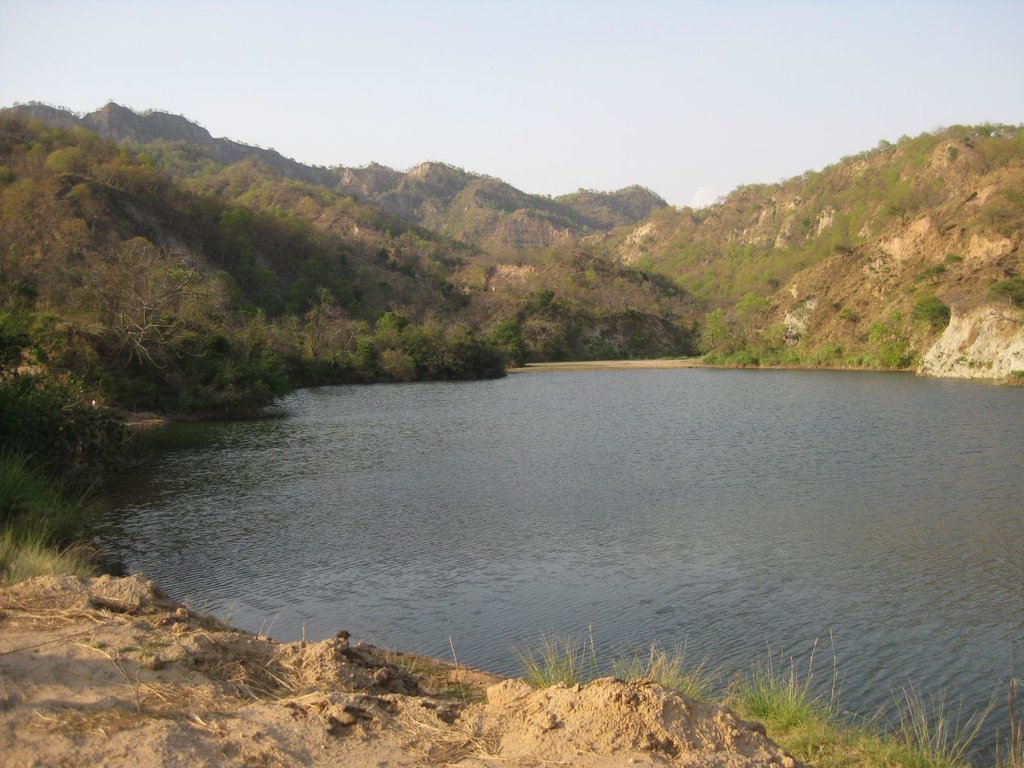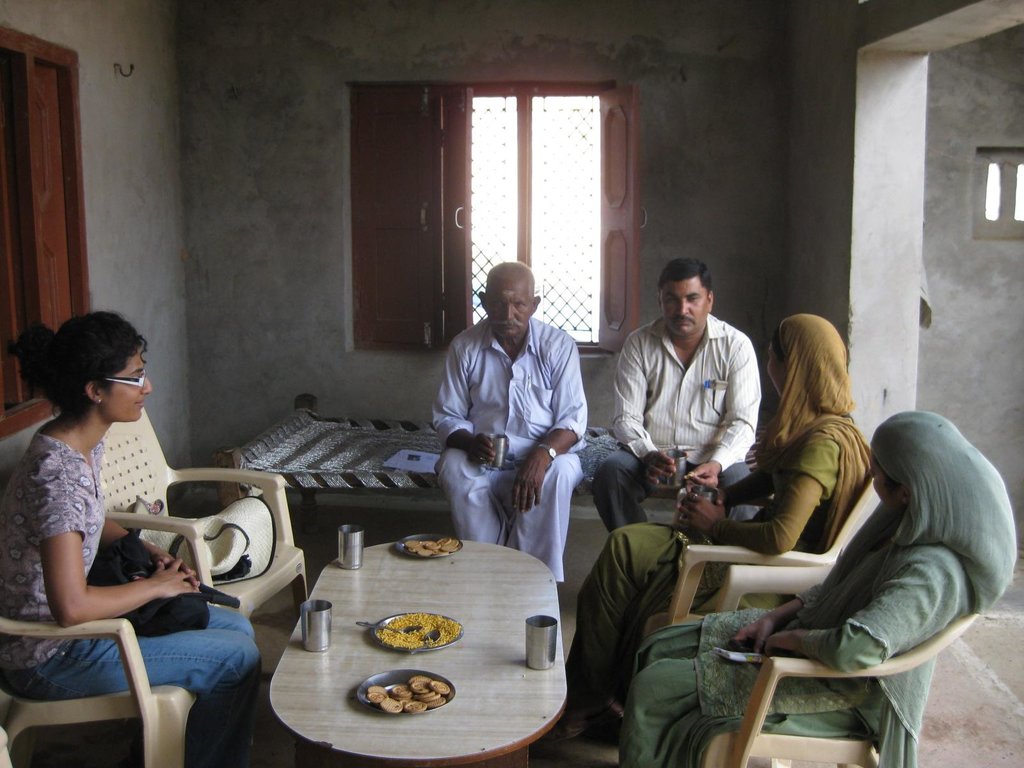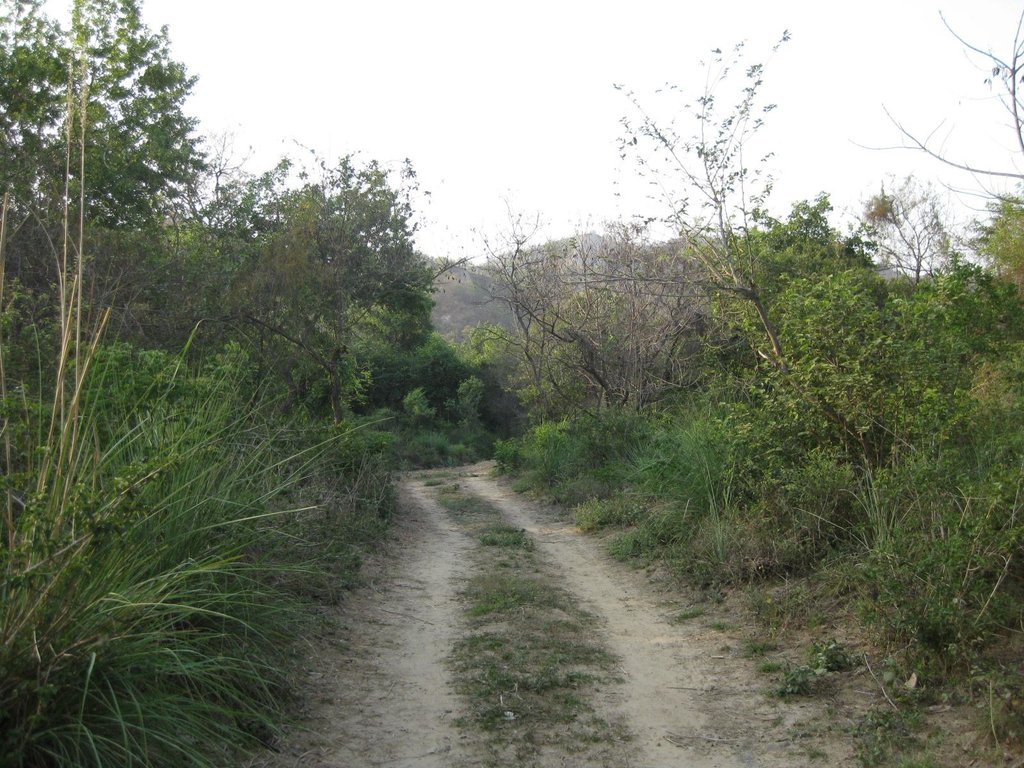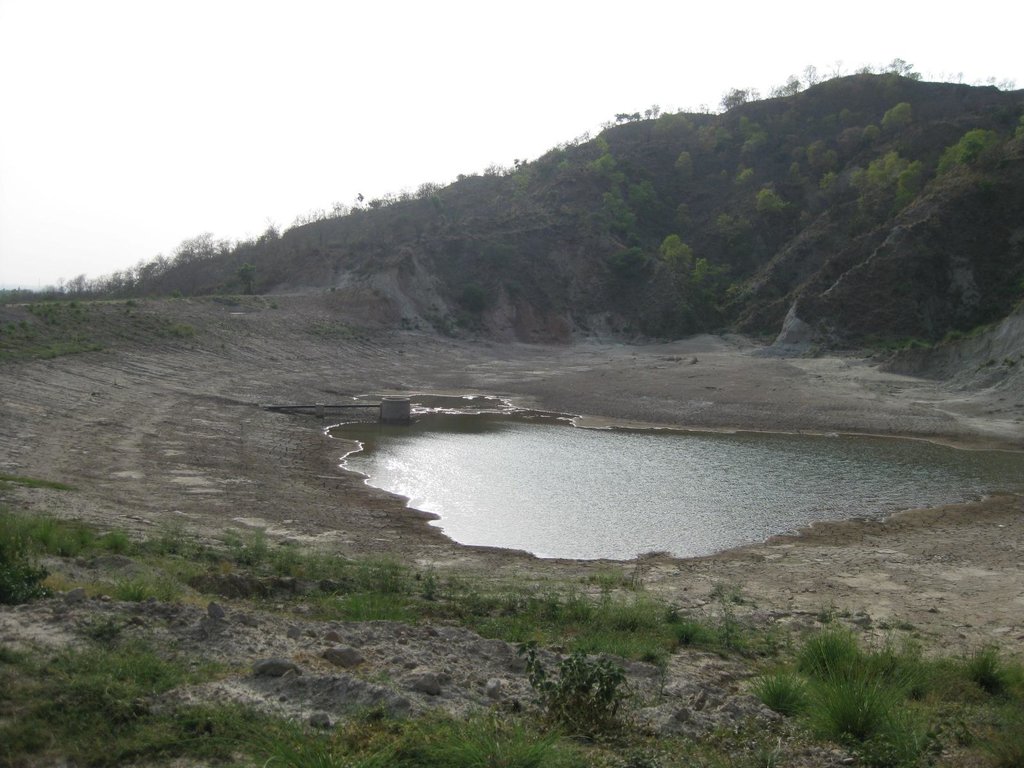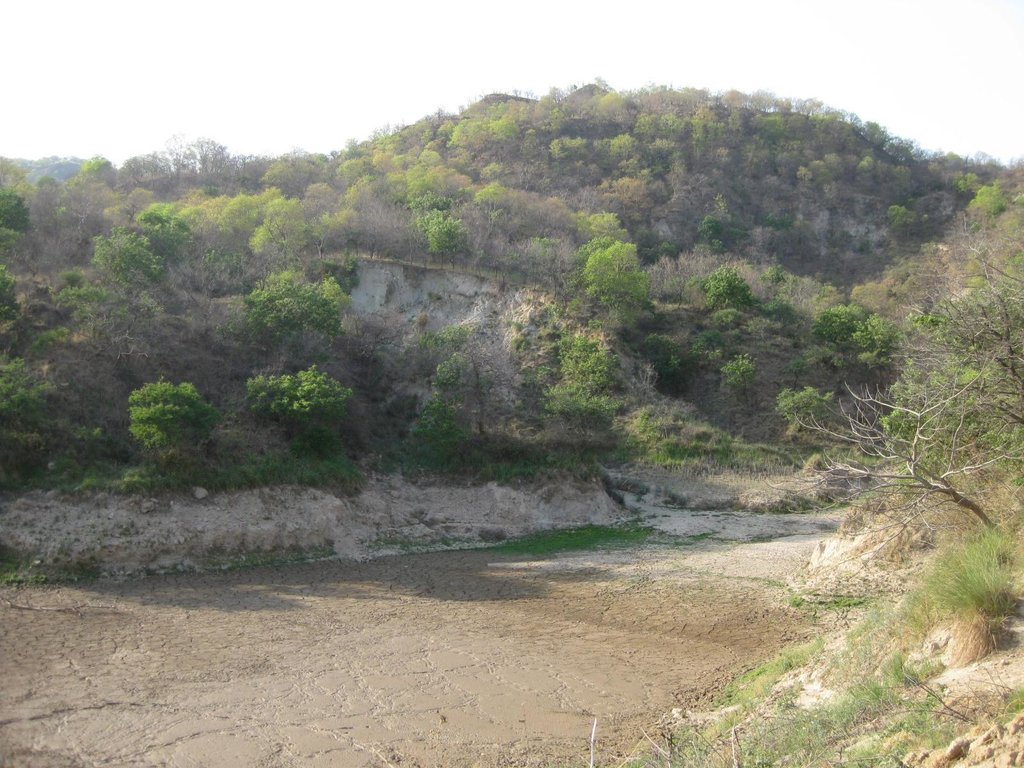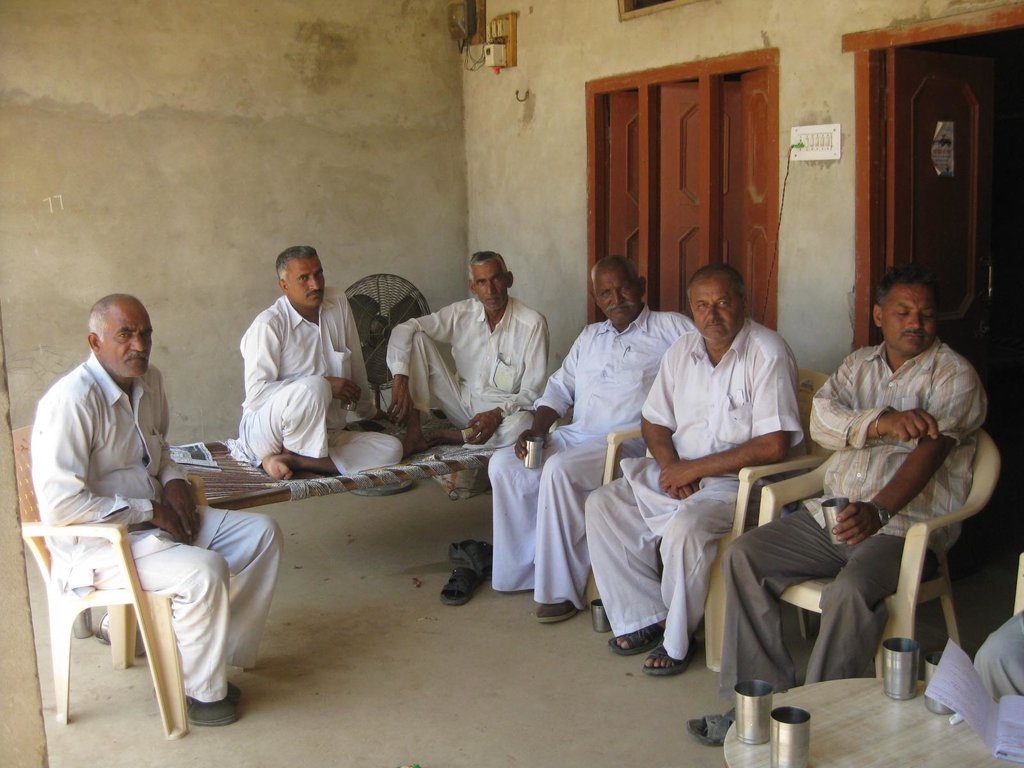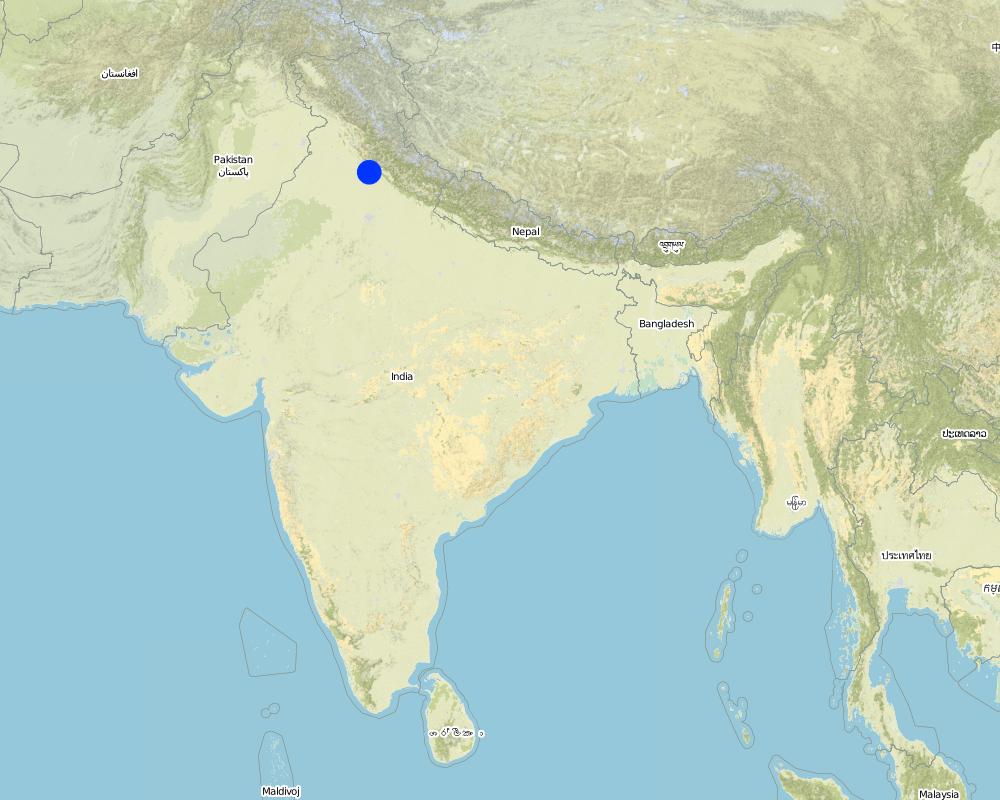Joint forest management [Индия]
- Создание:
- Обновить:
- Составитель: Sumana Datta
- Редактор: –
- Рецензент: Fabian Ottiger
joint forest management (Revisiting the former QA IND14)
approaches_2452 - Индия
Просмотреть разделы
Развернуть все Свернуть все1. Общая информация
1.2 Контактные данные специалистов и организаций, участвующих в описании и оценке Подхода
Специалист по УЗП:
Indukuri Sirisha
sirisha@teri.res.in
The Energy and Resource Institute (TERI)
Darbari Seth Block, India Habitat Center Lodhi Road, New Delhi 110 003,
Индия
Специалист по УЗП:
Название организации (-ий), содействовавших документированию/оценке Подхода (если применимо)
VU University Amsterdam (VU University Amsterdam) - НидерландыНазвание организации (-ий), содействовавших документированию/оценке Подхода (если применимо)
Tata Energy Research Institute TERI (Tata Energy Research Institute TERI) - Индия1.3 Условия, регламентирующие использование собранных ВОКАТ данных
Составитель и ответственный/-ые специалист(-ы) согласны с условиями, регламентирующими использование собранных ВОКАТ данных:
Да
1.4 Ссылка (-и) на Анкету (-ы) по Технологиям УЗП
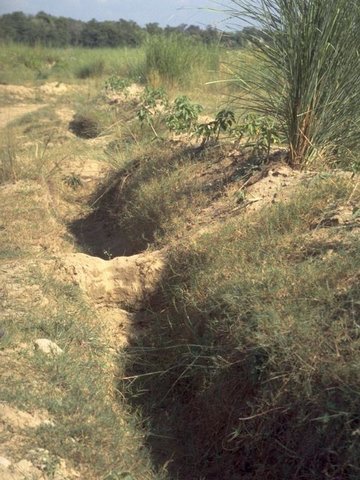
Forest catchment treatment [Индия]
Catchment treatment of degraded forest land including social fencing, infiltration trenches and enrichment planting with trees and grasses for production and dam protection.
- Составитель: Chetan Kumar
2. Описание Подхода УЗП
2.1 Краткое описание Подхода
Joint forest management is a community based program developed in collaboration with the forest department for the protection and management of local forests while providing incentives to the local communities with political and institutional support from the state.
2.2 Подробное описание Подхода
Подробное описание Подхода:
Aims / objectives: Joint forest management (JFM) in India emerged in the 1980s from community initiatives in forest protection. It is an approach that leads to environmental and production benefits through community co-operation in natural resource management. State-supported JFM in Haryana began in 1990 when the Haryana State Government signed an agreement with The Energy and Resources Institute (formerly TERI: Tata Energy Research Institute) - underpinned by financial support from the Ford Foundation - to help establish Hill Resource Management Societies (HRMS). These state sponsored, village level societies are key to the success of JFM, and their links to the State Forest Department are crucial.
Methods: The founding principles of HRMS include appropriate social composition, accountability and conflict resolution and are open to all members of the village communities regardless of gender or caste. Management committees are elected, and each must include at least two women. The HRMS oversee forest catchment management activities by villagers, arrange distribution of irrigation water (where applicable) and liaise with the State Forest Department and TERI. Hill Resource Management Societies derive income from non-timber forest products - particularly from sales of bhabbar grass (used for rope making) - and from water use charges. This income is managed by the HRMS and used for village development and community welfare. Where there is a water harvesting dam all members have the right to claim an equal share of the water, irrespective of whether they have land to irrigate or not.
Stages of implementation: The JFM program was implemented in Thaska with assistance from TERI from 1990 until 2003 where 342 ha of state owned forests were managed. In 2003 TERI, the implementing NGO formally pulled out of Thaska and from 2004 to 2007 there was a gap where JFM continued in the village on its own. In 2007, TERI in partnership with IUCN implemented ‘The Livelihoods and Landscape Strategy’ (LLS) in four villages, including Thaska.
Role of stakeholders: The stakeholders are the villagers, the Haryana forest department and the participating NGOs, in this case TERI. Within villages where JFM is implemented, all adult members (men and women) are eligible for membership within the HRMS. In India, and particularly Haryana, one of the major factors inhibiting women’s participation in JFM activities is the traditional role of women society and attitudes towards them. Women are often marginalized in villages such as Thaska. Thanks to the efforts of the forest department and TERI over the last two decades, the women are more empowered today and attend the HRMS meetings. JFM benefits people with land the most and landless people tend to lose out on such schemes. There is a provision for equal share of water to landless in Thaska. Even though rules for inclusion of water share for landless exist, these are currently not in practice.
2.3 Фотографии, иллюстрирующие Подход
2.5 Страна/ регион/ место, где применялся Подход
Страна:
Индия
Административная единица (Район/Область):
Haryana
Более точная привязка места:
Sadhora range in Yamunanagar district
Map
×2.6 Даты начала и окончания реализации Подхода
Год начала реализации:
1990
2.7 Тип Подхода
- в рамках проекта/ программы
2.8 Каковы цели/ задачи Подхода
The Approach focused mainly on other activities than SLM (Water harvesting, provision of NTFPs to boost incomes. Mainly related to economic activities.)
Develop democratic and powerful Hill Resource Management Societies. - protect the forest land, by means of local participatory governance, and thereby improve the flow of forest products. - boost agricultural productivity through irrigation in village fields from dams in the protected catchments
The SLM Approach addressed the following problems: The main basic problem to be confronted was lack of control over the degradation of forest in the Shivalik Hills which was leading to erosion and siltation of water bodies and a lack of forest products/grazing. - There was no community organization established to address these issues on land that was handed over to the village for management by the Forest Department. Clear felling for agriculture, increasing grazing pressure from large herds of cattle coupled with forest fires and reckless felling replaced the dense forests of Shivaliks by bare hills with thorny bushes. The result was severe erosion on the hills (700T7ha/year) causing serious siltation in lakes/rivers and also affecting agricultural productivity, the primary source of livelihood of the area.
2.9 Условия содействующие применению Технологии/ Технологий в рамках Подхода или затрудняющие его
Социальные/ культурные/ религиозные нормы и ценности
- затрудняют
- Exclusion of landless - Participation of women low - Lack of local institution for natural resource management.
Treatment through the SLM Approach: - Provision of water sharing to all members of the HRMS, including landless - Awareness raising activities conducted for women. Setting up of women’s self help groups for their empowerment - Set up Hill Resource Management Societies.
Наличие/ доступность финансовых ресурсов и услуг
- затрудняют
Inadequate budget from Forest Department for implementation.
Treatment through the SLM Approach: Water charges help to provide finance - but the State Government should assist more.
Нормативно-правовая база (землевладение, права на земле- и водопользование)
- содействуют
The existing land ownership, land use rights / water rights greatly helped the approach implementation: The ownership of the land rests with the state but equal tenure rights of the forest, forest produce, and water to all HRMS members has greatly benefited these societies. Land use rights hinder the approach for the people who are not a part of / excluded from the HRMS.
Осведомленность в области УЗП, доступность технической поддержки
- затрудняют
Inadequate appreciation/understanding of integrated soil and water conservation/production approach within Forest Department.
Treatment through the SLM Approach: Build awareness in Forest Department.
3. Участие и распределение ролей заинтересованных сторон
3.1 Заинтересованные стороны, участвующие в реализации Подхода и их роли
- местные землепользователи/ местные сообщества
HRMS members
All adult members of the village can participate in the HRMS. Women empowerment is an important aspect of the forest policy in Haryana to wean the rural communities of the natural resources. To achieve that the HFD and TERI have set up several women’s SHGs across the region, including three in Thaska. There are differences between the participation of men and women mainly due to the social structure and the ethos of the area. Even though 2 women are mandated to be on the HRMS executive body and 1 woman per household can be a member, their participation is low and women are not always present in the HRMS meetings. Over the last ten years their participation has increased although their presence is mostly passive. They do not feel comfortable voicing their opinions in meetings. They participate actively in SHG meetings. This village/ area has members belonging to minority groups belonging to scheduled castes (SC), as well as religious minorities (Muslim Gujjars). Initially, as each family was eligible for the participation in the HRMS these disadvantaged groups benefitted greatly. However, instances where minorities are excluded are still present indicating that there is room for improvement.
- эксперты по УЗП/ сельскому хозяйству
TERI has been involved in the JFM program since 1990 and was responsible for setting up the HRMS in Thaska.
- общественные организации
CSWCRTI, TERI
- местные власти
Forest officers and forest guards of the corresponding Block Office or Range Office.
- государственные власти (отвечающие за планирование или принятие решений)
Haryana forest department
- международные организации
Ford Foundation (no longer involved); IUCN (involved via the LLS program, discussed in section 2.1.1.2)
Если участвовало несколько заинтересованных сторон, назовите ведущую организацию:
Where: TERI – The Energy and Resource Institute; CSWCRTI - Central Soil Water Conservation Research and Training Institute, Chandigarh Within Haryana, JFM was initiated by the CSWCRTI in the 1970s in the village of Sukhomajri. This project was then handed over to the Haryana forest department (HFD). The HFD involved TERI in the implementation of JFM across Haryana in 1990 following the national
3.2 Участие местных землепользователей/ местных сообществ на разных стадиях реализации Подхода
| Участие местных землепользователей/ местных сообществ | Перечислите участников и опишите их вовлеченность | |
|---|---|---|
| инициирование/ мотивация | пассивное | Land users participated in awareness raising campaigns and public meetings |
| планирование | пассивное | Land users were consulted and provided information for baseline and feasibility studies, and wealth ranking; Various participatory (PRA) tools like FGDs, survey, pair wise ranking / scoring were used |
| выполнение | интерактивное | Land users responsible for most implementation activities, including provision of labor; Land users were the main agents and TERI played a facilitator role. |
| мониторинг/ оценка | пассивное | Data / observations for recording changes collected from the land users directly. |
| Research | пассивное | Studies carried out using various participatory (PRA) tools like FGDs, survey, pair wise ranking / scoring by TERI with people participation. |
3.3 Схема реализации (если имеется)
Описание:
Flow chart identifying the various stakeholders at different levels for the LLS program
Автор:
Fatema Baheranwala, Sirisha Indukuri, Sumana Datta
3.4 Принятие решений по выбору Технологии/ Технологий УЗП
Укажите, кто принимал решение по выбору применяемой Технологии/ Технологий:
- преимущественно специалисты по УЗП после консультаций с землепользователями
Поясните:
Decisions on the method of implementing the SLM Technology were made by mainly by SLM specialists with consultation of land users
4. Техническая поддержка, повышение компетенций и управление знаниями
4.1 Повышение компетенций/ обучение
Проводилось ли обучение землепользователей/ других заинтересованных лиц?
Да
Укажите, кто проходил обучение:
- землепользователи
Если существенно, укажите гендерный и возрастной состав, статус, этническую принадлежность и т.д.
Women self help groups (SHGs)
Тип обучения:
- общие собрания
- курсы
Рассматриваемые темы:
SHGs: Capacity building, saving money, and generating additional income. HRMS – awareness raising of existing services and training regarding daily functioning of HRMS, record maintenance, etc., TERI was involved in training the forest department under the JFM program, but those activities were stopped after 2004.
4.2 Консультационные услуги
Есть ли у землепользователей возможность получать консультации?
Да
Описание/ комментарий:
Name of method used for advisory service: Provide support to the HRMS and the SHG; Key elements: Improve day to day functioning to improve transparency and increase participation. , Support record maintenance.
Advisory service is inadequate to ensure the continuation of land conservation activities; Land users are aware of their responsibilities to maintain and repair existing SWC structures but need more training and support from the forest department or NGOs in order to carry out these activities.
4.3 Институциональная (организационная) поддержка
В ходе реализации Подхода были ли организованы новые институциональные структуры или поддержаны уже существующие?
- да, существенно
Укажите уровень, на котором структуры были укреплены или вновь созданы:
- местные
Укажите тип поддержки:
- повышение компетенций/ обучение
Подробнее:
The local institutions have been supported through training and capacity building over the last two decades.
4.4 Мониторинг и оценка
Являются ли мониторинг и оценка частью Подхода?
Да
Комментарии:
bio-physical aspects were ad hoc monitored by project staff through measurements
technical aspects were regular monitored by project staff through measurements
socio-cultural aspects were regular monitored by project staff through observations
economic / production aspects were regular monitored by project staff through observations
area treated aspects were ad hoc monitored by project staff through observations
no. of land users involved aspects were regular monitored by project staff through observations
management of Approach aspects were regular monitored by project staff through observations
There were several changes in the Approach as a result of monitoring and evaluation: There were several changes in the approach. Internal reviews are carried out every one or two years: there have been several changes proposed and carried out as a result. These changes were in aspects of sharing water irrigation, and in methods of utilizing income derived from forest products - especially bhabbar grass (Eulaliopsis binata).
4.5 Научные исследования
Были ли научные исследования частью Подхода?
Да
Укажите темы исследований:
- социология
- экономика / маркетинг
- экология
- технология
Напишите подробнее и назовите тех, кто выполнял исследования:
Research was carried out by TERI covering various aspects of the JFM program, the institutional set up, NTFP value chains, wealth ranking of the villages, etc., As LLS was an action research project, it involved a considerable amount of on-farm research. Some results were made available through TERI and by the Haryana forest department (HFD).
Research was carried out on-farm
5. Финансирование и внешняя материальная поддержка
5.1 Годовой бюджет мероприятий по УЗП в рамках Подхода
Комментарий (например, основные источники финансирования/ ключевые доноры):
Approach costs were met by the following donors: government (The government contributes in constructing SWC structures in the JFM forests. Maintenance and repair); international non-government (Ford foundation is no longer active in JFM and JFM does not receive any external funding in Haryana ); local community / land user(s) (Carry out maintenance and repair of the water harvesting and soil and water conservation structures.)
5.2 Финансирование и внешняя материальная поддержка, предоставляемая землепользователям
Предоставлялась ли землепользователям финансовая/ материальная поддержка для применения Технологии /Технологий?
Да
5.3 Субсидии на отдельные затраты (включая оплату труда)
- оборудование
| Укажите, какие ресурсы были субсидированы | В какой степени | Опишите субсидии подробнее |
|---|---|---|
| техника | профинансированы полностью | bulldozers are used to construct dams |
- сельскохозяйственные
| Укажите, какие ресурсы были субсидированы | В какой степени | Опишите субсидии подробнее |
|---|---|---|
| семена | профинансированы частично | |
- инфраструктура
| Укажите, какие ресурсы были субсидированы | В какой степени | Опишите субсидии подробнее |
|---|---|---|
| Buildings | профинансированы полностью | |
Если труд землепользователя был существенным вкладом, укажите, был ли этот вклад:
- добровольный
Комментарии:
Construction of dams and other soil conservation structures are undertaken by the local communities. Dam maintenance is carried out by the local community using the HRMS funds for the most part. For establishment of dams and infrastructure, labor is rewarded (up to 95%) with cash wages.
5.4 Кредитование
Предоставлялись ли в рамках Подхода кредиты на мероприятия УЗП?
Да
Укажите условия предоставления (процент, окупаемость и т.д.):
Interest rate charged: 2.0%; repayment conditions: SHG Women. The money contributed and saved by the SHG women is used for inter-loaning amongst themselves with an interest rate of 2% per month..
Interest was lower than market rate.
Перечислите заёмщиков:
Women from the self help groups
6. Анализ влияния и заключительные положения
6.1 Влияние Подхода
Сумел ли Подход помочь землепользователям внедрить и поддерживать технологии УЗП?
- Нет
- Да, немного
- Да, умеренно
- Да, существенно
The creation of HRMS led to economic, ecological and social improvements. Forest canopy was restored, and tree density increased. Soil erosion reduced and water management improved. Provision of water boosted agricultural productivity provision of grasses mainly in the first decade enhanced incomes.
Сумел ли Подход расширить возможности социально и экономически уязвимых групп?
- Нет
- Да, немного
- Да, умеренно
- Да, существенно
For the marginalized landless communities the provision of NTFPs improved their incomes. Furthermore, participation in the HRMS meant equal rights that empowered these groups. Yet, poverty persists.
Сумел ли Подход разрешить правовые проблемы землевладения/ землепользования, препятствующие использованию технологий УЗП?
- Нет
- Да, немного
- Да, умеренно
- Да, существенно
Typical case of common pool resource problems: The people within these villages were over-utilizing their resources and thus giving access rights to land and water ensured that people felt a sense of ownership and derived benefits from these resources, which motivated them to protect them.
Did other land users / projects adopt the Approach?
- Нет
- Да, немного
- Да, умеренно
- Да, существенно
The original experiment in Sukhomajri has been replicated in 60 other villages within Ambala and Yamunagar Districts - and further afield in Haryana and India generally. The women in Thaska were eager to form SHGs after observing other SHGs in practice.
Did the Approach lead to improved livelihoods / human well-being?
- Нет
- Да, немного
- Да, умеренно
- Да, существенно
Over the past decade incentives remained constant. Thus, the incentives haven’t kept up with the changing economic trends within the country and people’s aspirations for their well-being.
Did the Approach help to alleviate poverty?
- Нет
- Да, немного
- Да, умеренно
- Да, существенно
The approach mainly benefited people with land in terms of poverty alleviation. JFM can improve livelihoods but cannot alleviate poverty. Forests cannot satisfy the growing demands of these people.
6.2 Основные причины, побуждающие землепользователей внедрять УЗП
- рост прибыли (доходности) и рентабельности
Indirectly through agriculture
- well-being and livelihoods improvement
Through agriculture and the provision of NTFPs
6.3 Долгосрочная устойчивость мероприятий в рамках Подхода
Могут ли землепользователи самостоятельно (без внешней поддержки) продолжать применение того, что было реализовано в рамках Подхода?
- нет уверенности
Если нет или нет уверенности, объясните почему:
Over the last decade the HRMS remained static, which resulted in a consequent weakening of the institution and a general loss of interest in the program. This could partially be due to the creation of other parallel institutions operating in the same village with no integration. This resulted in a duplication of efforts and and created tensions regarding rights and authority. Also, funding greatly reduced. Lack of funds have impeded the timely maintenance and repair of the technical structures
6.4 Сильные стороны/ преимущества Подхода
| Сильные стороны/ преимущества/ возможности по мнению землепользователей |
|---|
| The condition of managed forests has improved. Forests have regenerated and forest cover and tree density have improved. (How to sustain/ enhance this strength: Ensure that people are motivated to protect and manage their forests. ) |
| The JFM program brought the forest department and the local communities closer. The FD and the local communities have learnt to work together and in many areas have a congenial working relationship. (How to sustain/ enhance this strength: Continue existing activities) |
| Сильные стороны/ преимущества/ возможности по мнению составителя или других ключевых специалистов |
|---|
| Direct and indirect benefits of JFM through agriculture and livestock rearing, greatly improved income of participating families. (How to sustain/ enhance this strength: Better access to markets and training of value addition on NTFPs required.) |
| The institutional set up of JFM is strong in several villages. The HRMS function in a democratic manner and people are aware of their rights and responsibilities. For the participating members, the benefit sharing was considered fair and equitable. (How to sustain/ enhance this strength: Continue to build capacity of these institutions. Guide and support the HRMS to ensure that they continue to grow and function in a democratic manner. ) |
| JFM had a tangible impact on tenure rights. The creation of HRMS established a healthy relationship between the FD and the local communities. (How to sustain/ enhance this strength: Make the JFM policy flexible – where JFM communities are performing well give them greater responsibilities and rights.) |
| Women and minorities are more empowered today, through schemes such as the creation of SHGs and participation in HRMS meetings. The creation of SHGs has given women access to micro credit. (How to sustain/ enhance this strength: Continue to create awareness among women.) |
6.5 Слабые стороны/ недостатки Подхода и пути их преодоления
| Слабые стороны/ недостатки/ риски по мнению землепользователей | Возможные пути их преодоления/снижения? |
|---|---|
| Incentives for participation are not sufficient. Local communities are concerned that the younger generation will continue these activities due to the dearth of incentives. | Land users in different villages have different needs from their forests. JFM policy needs to be reformed. Policy should be flexible to be able to tailor it to the specific needs of the land users to provide them with the appropriate incentives to ensure participation. |
| Women lack training/ tools to develop skills to engage in income generation activities | Conduct training sessions and distribute tools to women to allow them to engage in income generation activities. |
| Due to the improvement in forest quality the number of wild animals in these forests has increased. Recently animals are entering the agricultural fields and destroying the crops. | The villagers would like to fence the forest area, however carrying out enrichment planting in the forest by planting edible plants and shrubs and either constructing trenches around the forest or planting vegetative barriers that can reduce the movement of the animals to the village lands is recommended. |
| Слабые стороны/ недостатки/ риски по мнению составителя или ответственных специалистов | Возможные пути их преодоления/снижения? |
|---|---|
| Huge gaps in market access and value addition for NTFPs. | Possible solutions included the removal of middle men, establishing links to the markets and training them for value addition of their products to boost their incomes. |
| Biodiversity of the forests is decreasing due to the spread of an invasive species, Lantana camara, that threatens to crowd out valuable species and is susceptible to forest fires. | Train land users in culling of Lantana camara as well as making NTFPs using the shrub. Engage in forest maintenance and clearance of paths to avoid forest fires. |
| Malfunctioning dams have instigated the proliferation of tube wells across the village, which threatens to lower the water table. | Ensure that sufficient funds are available to carry out regular dam maintenance and repair. Regulate tube wells by including permission for setting up tube wells in the joint management agreement. |
| Multiple programs that set up parallel institutions for resource management means less attention is paid to existing institutions and results in the inefficient utilization of resources. | There is a need to synergize and focus on the goals of these programs rather than the means of implementation. |
| Funding for JFM has drastically reduced. | There is an opportunity to merge JFM activities with regional, national and international programs to channel funds through JFM committees for forest related activities. |
| Participation of women is still passive. | Continue to create awareness among women. |
7. Справочные материалы и ссылки
7.1 Методы сбора/источники информации
- выезды на места, полевые обследования
- опросы землепользователей
7.2 Ссылки на опубликованные материалы
Название, автор, год публикации, ISBN:
IBRAD (2006). Study on effectiveness and functioning of joint forest management committees in India. A project of National Afforestation and Eco-development Board, Ministry of Environment and Forests, Government of India. Conducted by Indian Institute of Bio-Social Research & Development (IBRAD), Kolkata, India
Название, автор, год публикации, ISBN:
ISFR (2009). India State of Forest Report 2009 – Haryana. Forest Survey of India. Ministry of Environment and Forests, Government of India Retrieved from <http://www.fsi.nic.in/sfr_2009/haryana.pdf> on June 21 2011
Название, автор, год публикации, ISBN:
Kanetkar, R.S., Varalakshmi, V. (1994). Women in Godam - Haryana: A gender and caste based study on conservation of forest resources. Joint forest management series no. 13. Haryana forest department and Tata Energy Research Institute (TERI), New Delhi
Название, автор, год публикации, ISBN:
Kaul, O.N., Dwivedi, B.N., Shah, V. (1995 a). Ecological revival of Haryana Siwaliks through community participation. Joint Forest Management series no. 17. Haryana forest department and Tata Energy Research Institute (TERI), New Delhi
Ссылки и модули
Развернуть все Свернуть всеСсылки

Forest catchment treatment [Индия]
Catchment treatment of degraded forest land including social fencing, infiltration trenches and enrichment planting with trees and grasses for production and dam protection.
- Составитель: Chetan Kumar
Модули
Нет модулей


